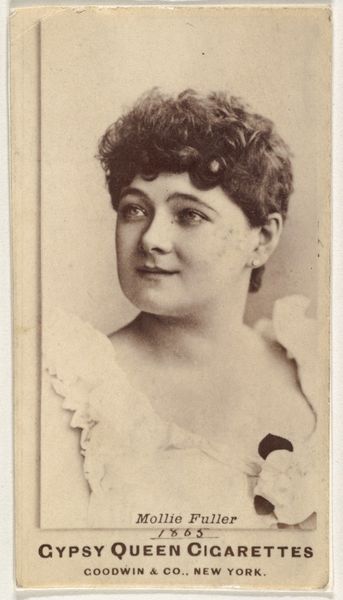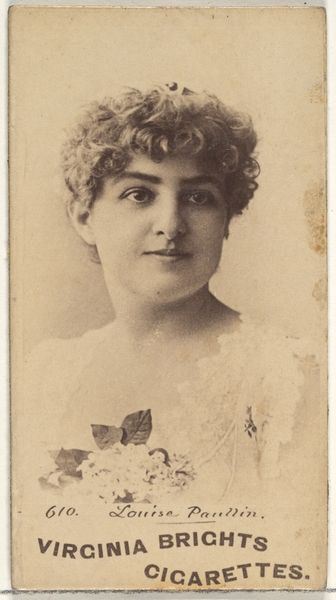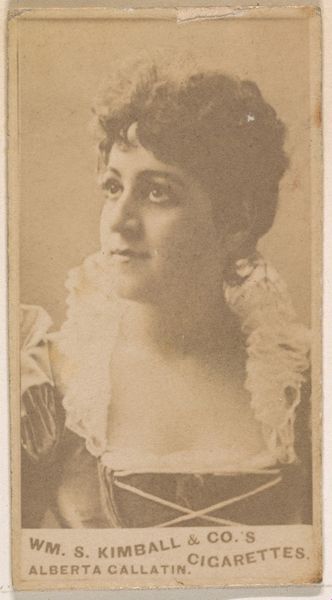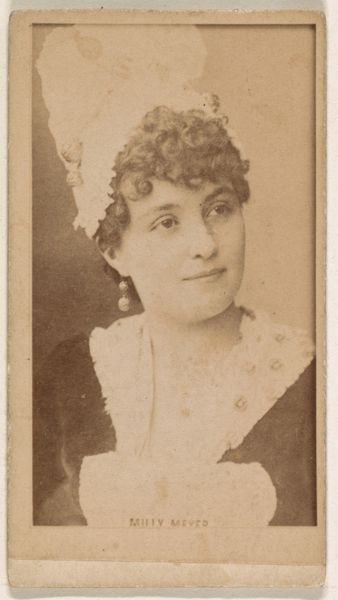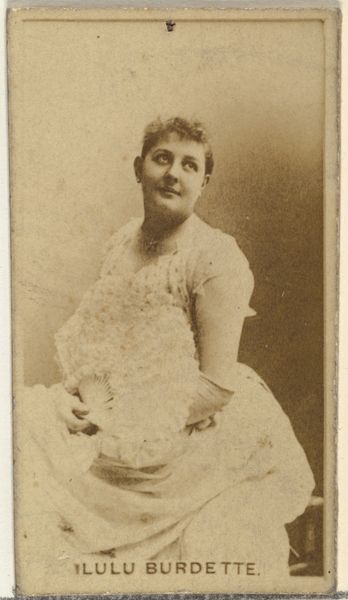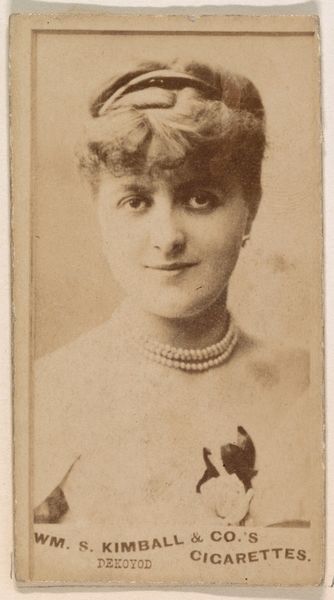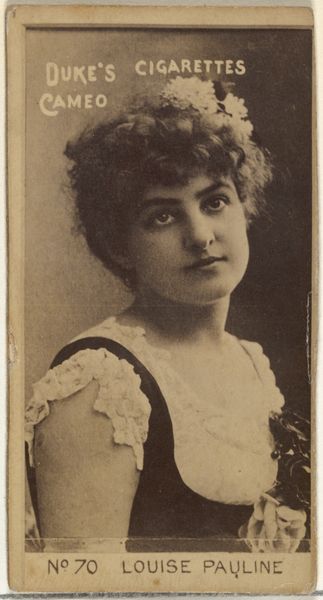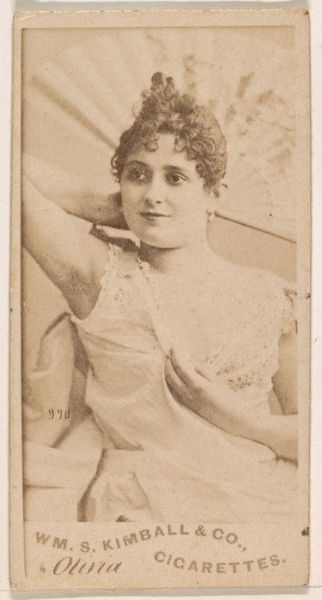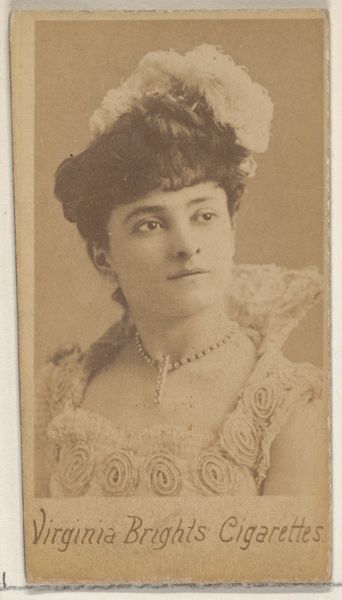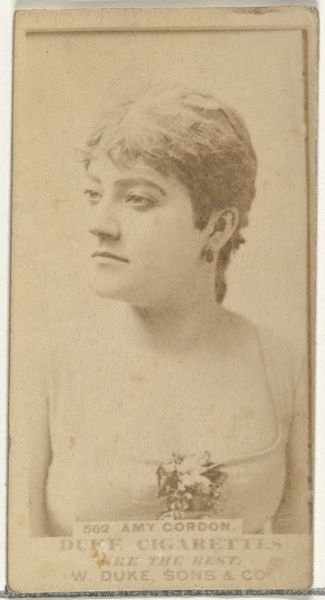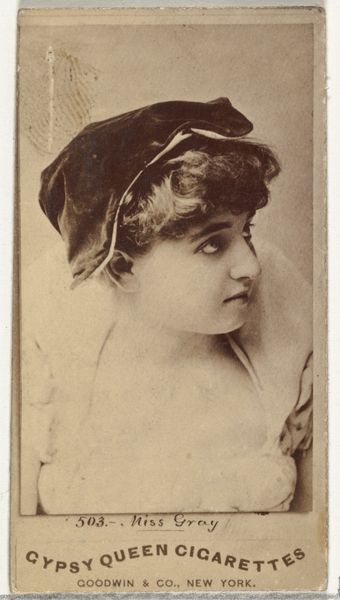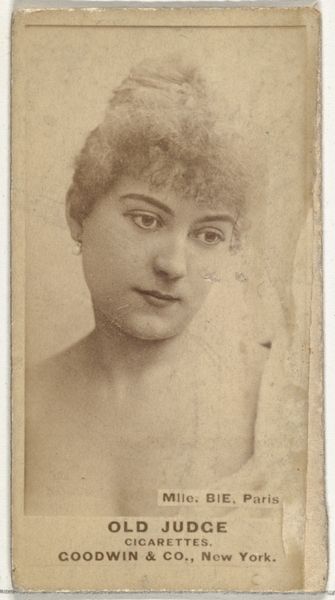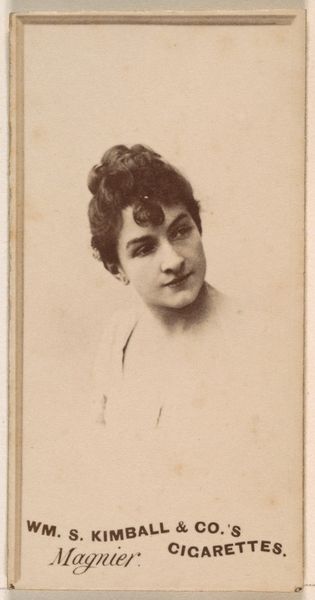
Card Number 60, Jennie Freeland, from the Actors and Actresses series (N145-4) issued by Duke Sons & Co. to promote Cameo Cigarettes 1880s
0:00
0:00
Dimensions: Sheet: 2 11/16 × 1 3/8 in. (6.8 × 3.5 cm)
Copyright: Public Domain
Curator: Looking at this sepia-toned card, what do you notice first? Editor: The name "Jennie Freeland" gives it a personal touch. It feels intimate, like I’ve stumbled upon a lost photo of a distant relative. It's small and quiet but also carries a melancholic air, perhaps because it is also faded? Curator: It is a peculiar object. Dating from the 1880s, this is card number 60 in the Actors and Actresses series (N145-4) produced by W. Duke, Sons & Co. as a promotional item for their Cameo Cigarettes. Currently, it is located in the collection of the Metropolitan Museum of Art. I am immediately intrigued by how tobacco companies leveraged celebrity culture to boost their brands. Editor: It’s wild to think that back then, advertisements used collectible cards of people! Imagine a world where cigarette packs feature snapshots of opera singers or famous people. But seriously, the card is pretty neat, the light and shadow play a crucial role in rendering her facial features with incredible grace. Curator: Absolutely. There is a deeply embedded commercial imperative. The card is not solely a portrait, but a tool intended to build consumer loyalty. Furthermore, by centering Jennie Freeland, likely a stage performer, this object opens questions around women's visibility in performance and print culture during that era. Editor: She has an earnest gaze; do you feel it too? A simple cross hangs around her neck, it conveys that Freeland sought personal autonomy within constraints imposed by society. Plus, these were meant to be collected and traded like modern trading cards... What stories these things must carry around, who she was and what her experiences really involved. Curator: Exactly! It highlights shifting perceptions of class, celebrity, and gender roles at the turn of the century, but through the lens of consumption. Also, one could even examine the aesthetics, which bears resemblances to ukiyo-e portraiture... Editor: Yeah, well that all just means it is still stunning in its simplicity.
Comments
No comments
Be the first to comment and join the conversation on the ultimate creative platform.
